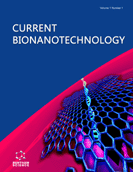Abstract
Enormous progress in the field of vaccine development has moved the area from traditional vaccines using whole microorganisms to subunit vaccines containing only purified or modified antigenic proteins. The low immunogenic potentials of subunit vaccines compared to live attenuated pathogens, have prompted the research towards developing new adjuvants with the ability to mimic and enhance the innate and adaptive immune responses. Novel adjuvants formulations based on the discovery of pattern recognition receptors (PRRs), the main class of innate immunity sensors have recently gained interest. The major family of PRRs called Toll-like receptors (TLRs), which are expressed by a variety of cells and capable to induce innate immune responses and effective stimulation of transition from innate immune responses to adaptive immune responses. PRR ligands of natural and synthetic origin have been evaluated as potential adjuvants in a variety of applications including vaccine formulations. Apart from this, for generating effective and protective immune responses, targeted delivery of vaccine antigens along with PRR agonists to the desired cells is of great importance. New strategy of delivering vaccine antigens along with adjuvants using proper nano-sized materials has gained much attention during the recent years. Here we review the recent advances regarding PRR-based nano-adjuvants developments, focusing on current nano-materials based delivery system and their applications in biomedical sciences.
Keywords: Adjuvants, delivery vehicles, nano-materials, pattern recognition receptors (PRRs), vaccine.
Graphical Abstract
 34
34 2
2

